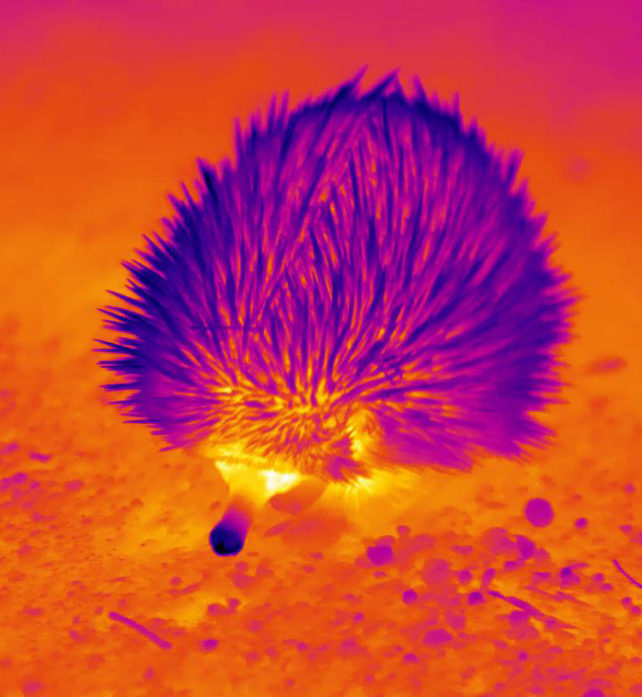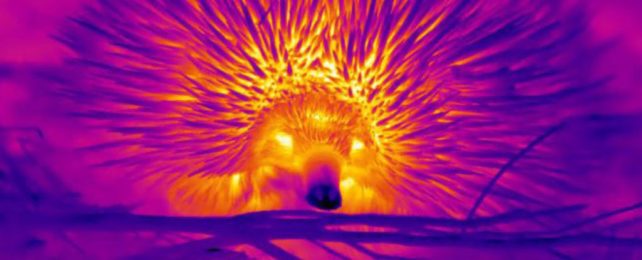On a hot day in the Australian outback, a koala hugs the cool branches of a eucalypt, while a wombat hides underground in its burrow, and a kangaroo spits on its wrists to chill its blood vessels. Nearer the coast, a fur seal on the rocks pees on its flippers.
The echidna is different. It doesn't sweat, pant, lick, or urinate on itself to cool down. But what it can do is blow wet bubbles of snot out of its nose. And that skill has been seriously under-appreciated.
Researchers at Curtin University in Australia have shown this spiny monotreme uses booger-y exhalations to bring down its body temperature. The findings are based on the short-beaked echidna (Tachyglossus aculeatus), but there's a chance the cooling technique is used by other echidna species, too.
"Echidnas blow bubbles from their nose, which burst over the nose tip and wet it," explains ecophysiologist Christine Cooper from Curtin University in Australia.
"As the moisture evaporates it cools their blood, meaning their nose tip works as an evaporative window."
Scientists have long wondered how echidnas manage to survive in the hot Australian climate. Previous studies in the lab have shown echidnas have a relatively low heat tolerance and should not survive past 35°C (95°F).
And yet they do. Short-beaked echidnas have been seen sheltering in hollow logs that are 40°C.
So how do they stand it?
The team at Curtin discovered a few fascinating ways that monotremes cool themselves. At least once a month over the course of a year, researchers took the temperatures of 124 short-beaked echidnas in the wild using infrared thermography cameras. The team also recorded the temperature of each echidna's surroundings.
At some times of the year and in some parts of Western Australia, the authors measured ground temperatures as high as 47°C. But the body temperature of the echidnas that were studied stayed consistently below 30°C.
The ears were usually the hottest part of the monotreme's body. The tip of their beak (or nose), the coolest.
In the infrared images below, the cool surfaces stand out in blue-ish purple, while the hottest surfaces range from red to orange to yellow.

The colorful thermal map suggests echidnas retain heat in their spines and shed heat from their spine-less areas, like their belly and their legs.
To shed heat, the animal merely has to 'open' its underparts to the air, or squash them against the cool ground. The tip of the beak works differently. Under infrared light, it almost looks like a little blue Rudolph nose, illustrating its relative coolness.
Based on echidna physiology, researchers know that just underneath the surface of the beak tip lies a sinus filled with blood vessels. Similar to what happens when a kangaroo licks its wrists, the echidna essentially expels excess body heat in its blood by evaporating the moisture on its nose.
"We identify the beak tip of short-beaked echidnas as a unique type of evaporative window," researchers at Curtin conclude.
"At high [temperatures] echidnas blow mucus bubbles, adding moisture to the beak tip."
Nobody said surviving Australia's harsh wilderness was pretty work. Blowing a few booger-bubbles to get through the midday heat beats peeing on your hands any day.
The study was published in Biology Letters.
